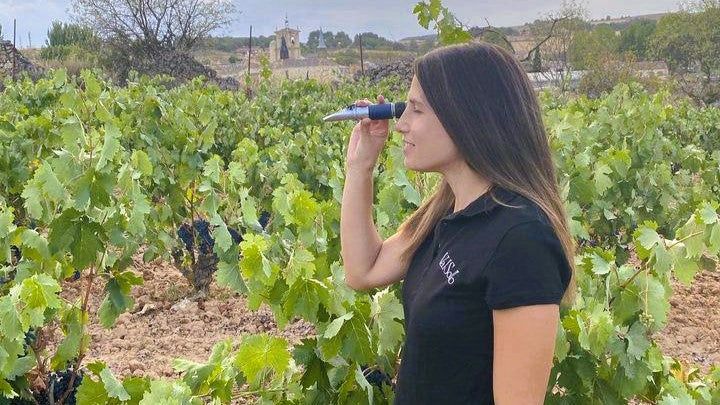For many of us, the phrase “harvest time” conjures up idyllic images of the dedicated farmer, cloth cap firmly in place, heading into his field to pick the fruits of his labour, whilst Beethoven’s Pastoral Symphony stirs in the background (well, it certainly does for the British Film Industry).
But for grape growers and winemakers, it’s one of the most stressful times of the year. Their whole livelihood depends on the success of the harvest. And the success of the harvest depends more than anything on one thing – timing.
Because it’s the winemaker’s job to decide when to pick the grapes. And that’s not easy.
In simple terms, grapes are harvested when they are at the optimum level of ripeness. That means the right balance between the concentration of sugar in the grapes – remember, more sugar means more potential alcohol in the final wine – and acidity. As grapes ripen, sugar levels increase while acidity decreases, and the hotter the climate the quicker that process is accelerated.
What the right balance is will depend on several things – grape variety, where the grapes are grown, and the winemakers’ preferences in terms of the style of wine they want to make. But, in general, all winemakers will have an idea of what sugar levels they want in their grapes.
The question is – how do they know how much sugar a grape contains?
Well, you may have seen pictures of winemakers out in the field with what looks like a small spyglass held to their eye (if not, see below). This instrument is called a refractometer, and at this time of year, no self-respecting producer would be without one.

Susana Arroyo at Bodegas Ismael Arroyo using a refractometer.
A refractometer is a tube-like instrument with an angled glass screen at one end and an eyepiece at the other. Without getting too techy, refractometers measure how light is refracted (or how it bends) as it passes through a liquid. The more the light is refracted, the denser the liquid is. Sugar makes grape juice denser, so when winemakers want to test the sugar levels in their grapes, they use a refractometer to measure the juice’s density.
To do that they will generally pick a few grapes from different parts of a plot – so that they get a representative sample – and squeeze the juice out of them. They then put a few drops of that grape juice onto the slanting end of the refractometer - under what looks like a microscope slide – and look through the other end to measure how much the light is refracted, and therefore get a measure of how much sugar is in the juice.
When the sugar levels reach that “right” point it’s time to harvest. Simple, right?
Well, yes, and no. Because whilst winemakers use science to test when the grapes are ready, they are left praying when it comes to the other major factor. The weather.
And this year, it’s been pretty extreme.
For example, in Cariñena, Aragon – home to some of Spain’s finest Garnacha – they have had two years of drought followed by storms in July. As if that wasn’t enough, just last week they were hit with freak violent hailstorms. As a result, about 700 hectares of vineyards (5% of the DO’s total) were damaged, and 1.5 million kilos of grapes were lost. That’s about 9% of the total harvest.
Meanwhile, 200km to the east in Priorat high summer temperatures have brought the harvest forward by a full month compared to last year. Just the other day Daphne Glorian - owner of Clos I Terrasses and one of the key figures behind the renaissance of Priorat in the 1980s – was on the news bemoaning the impact all that heat is having on her vineyards. She described the 2023 harvest as: “unlike any other (…) temperatures keep rising and the worst thing is that they don’t drop below 20ºC even at night. For the vines, this is a dramatic scenario.”
So, what’s a winemaker to do if their grapes aren’t quite as ripe as they want them to be, but storm clouds are looming on the horizon? Or how do you manage if an overly hot summer means the grapes are ready before you’ve got all your harvest workers in place? Science can take you so far. But for a winemaker, the real skill lies in weighing up all the aspects – grapes, weather, resources – and identifying that small, but vitally important window to get the harvest underway.
Do that well, and we will all be enjoying delicious 2023 wines in the months and years to come. Get it wrong, and it could spell disaster for their business. It's no surprise then that at this time of year, the most important thing to pick is the moment.

